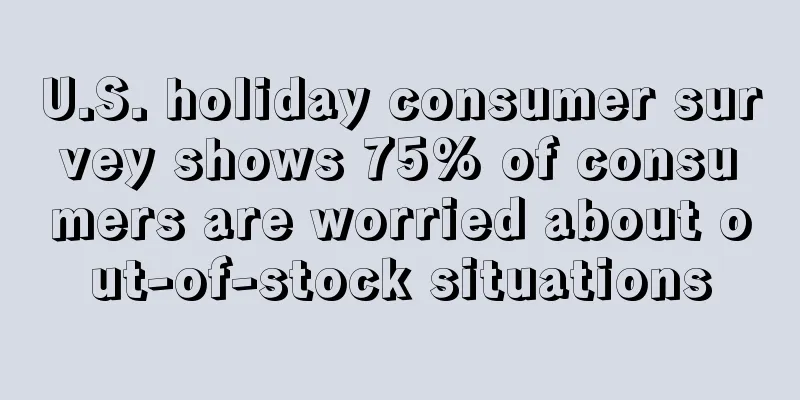U.S. holiday consumer survey shows 75% of consumers are worried about out-of-stock situations

|
After surveying 4,315 consumers and 30 retail executives, Deloitte predicts that average holiday spending this year will increase by 5% from last year to $1,463. Among them, the average gift spending is expected to be $501, non-gift spending is $426, and experience spending is $536. In terms of categories, people have the largest budget for clothing and accessories, which is $304, followed by electronics and gift cards, food and beverages, home kitchen, toys, health and pet products.
While per capita spending will increase overall, Deloitte noted that this will be driven by higher-income households, who will spend 15% more on average to $2,624 compared to last year, while lower-income households are expected to spend an average of $536, down from $688 last year.
In addition, many low-income consumers do not plan to participate in the shopping season. According to the survey, 11.5% of respondents said they would not buy anything during this shopping season, compared to only 4.9% last year. Among consumers who do not plan to shop, nearly 70% are from low-income families. Deloitte speculates that the reason for this is that inflation has dealt a heavy blow to low-income families.
The shortage of goods has attracted everyone's attention this year. Deloitte said that 75% of consumers are worried about the shortage of goods this year , especially the shortage of electronic products and toys. Deloitte pointed out that there are several reasons behind the low inventory level, one is the shortage of chips for manufacturing electronic products; the other is supply chain disruptions, such as transportation problems or weather problems.
Affected by the tight supply chain, more consumers plan to shop in advance this year. In addition to the supply chain, the reasons they give for early shopping include ensuring timely delivery of goods, completing holiday shopping as soon as possible, avoiding shopping peaks, and worrying about the uncertainty of the epidemic.
In addition, Deloitte also found that consumers prefer free delivery to fast delivery. They are willing to wait two to three days to get an item rather than pay extra to get it quickly. This also prompts people to shop several weeks in advance. USA Holiday spending |
<<: Demand for fashion categories in the UK increases, and online market sales continue to heat up!
>>: Amazon eyes Indian market, expands e-payments and financial services
Recommend
What is GoDaddy? GoDaddy Review, Features
GoDaddy is the world's largest platform for e...
What is Cross-border Good Luck? Cross-border Good Luck Review, Features
Cross-border Good Luck is affiliated to Duhaoyun ...
What is Yingkai International Freight Forwarding? Yingkai International Freight Forwarding Review, Features
Guangzhou Yingkai International Freight Forwarding...
U.S. package volume grew 37% to 20 billion in 2020
Pitney Bowes is a global technology company that ...
As prices remain high, U.S. consumers cut back on purchases
According to NPD, American consumers have begun t...
What is Shanghai Hongshan International Logistics Co., Ltd.? Shanghai Hongshan International Logistics Co., Ltd. Review, Features
Shanghai Hongshan International Logistics Co., Ltd...
UK social e-commerce trends revealed, home products are the most popular?
According to foreign media reports, the data plat...
Lamoda: Russian demand for household goods grows 39%
According to a recent study by Lamoda, a Russian ...
A large number of cross-border sellers emerge in Jiangsu
Nanjing takes the lead, and Jiangsu's cross-b...
What is Yushanyun ERP? Yushanyun ERP Review, Features
Yushan Cloud ERP is a product of Shanghai Yushan ...
Vietnam's e-commerce is booming, with 83% of best-selling products coming from abroad!
Affected by the epidemic, Vietnamese people's...
What is SCA Verification? SCA Verification Review, Features
SCA verification (Strong Customer Authentication) ...
What is Xiamen Sulaimei Supply Chain Co., Ltd.? Xiamen Sulaimei Supply Chain Co., Ltd. Review, Features
Xiamen Sulaimei Supply Chain Co., Ltd. was establi...
What is Alshop? Alshop Review, Features
Alshop is a comprehensive shopping website in the ...
What is Yida Technology (Shanghai) Co., Ltd.? Yida Technology (Shanghai) Co., Ltd. Review, Features
YiDa Technology (Shanghai) Co., Ltd. (Shanghai) C...









